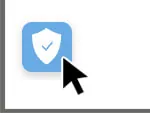Before a hurricane hits, develop a hurricane communication plan that your entire organization can depend on.
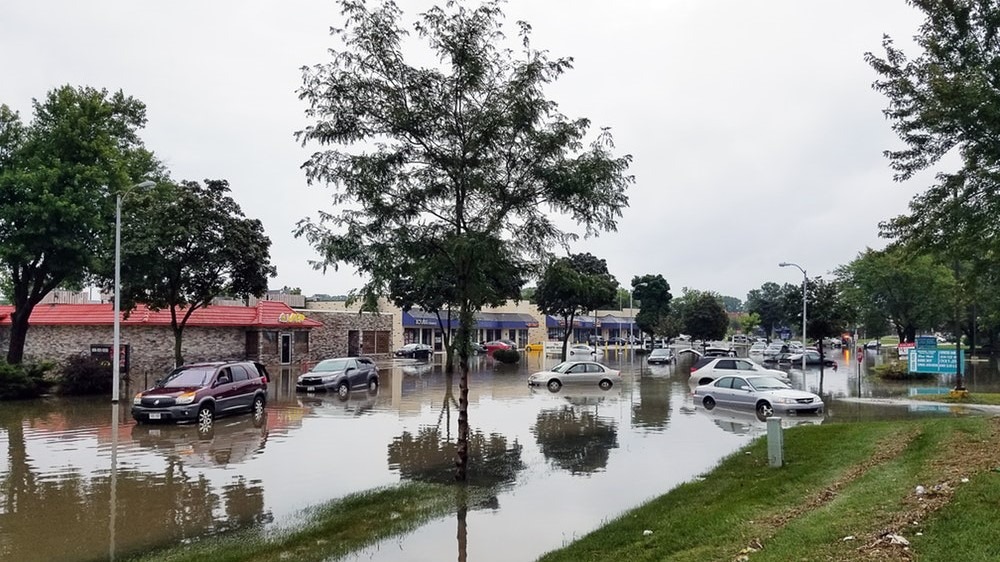
How to Communicate During a Hurricane (Download Templates)
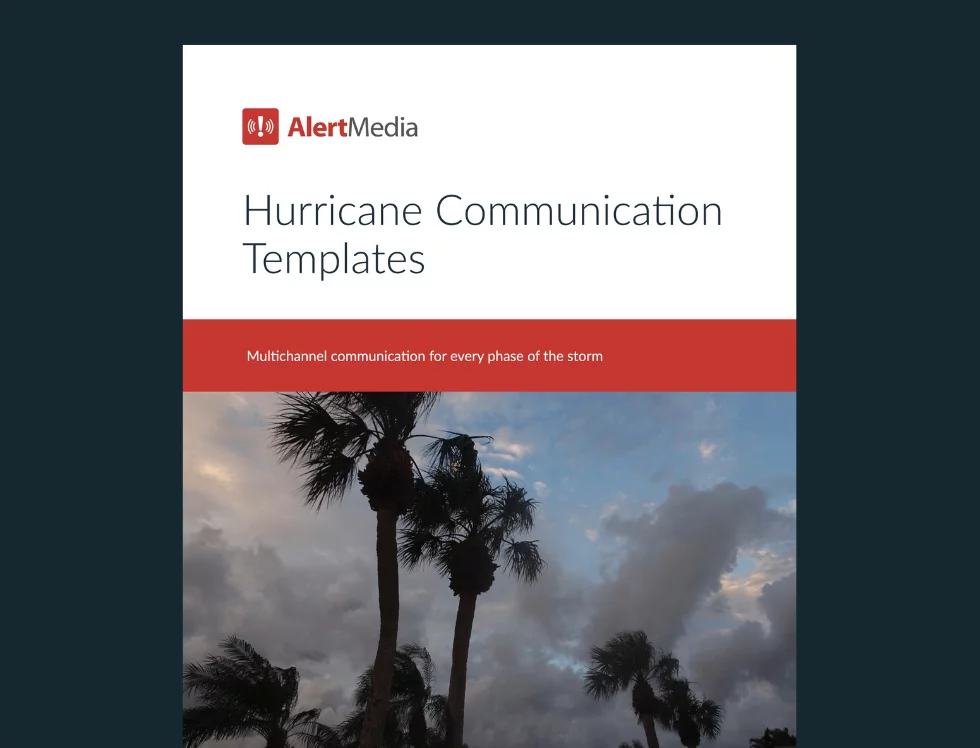
Is your business ready to face the oncoming storms? The Atlantic hurricane season is underway, and CSU’s forecasts for 2025 predict an above-normal season due to the swing back to La Niña conditions and warmer-than-average ocean temperatures. With 17 named storms and four major hurricanes expected, preparing for this year’s hurricane season is critical for all businesses, especially those with facilities, employees, and operational connections along the Atlantic Coast.
As you consider preparing your business for a hurricane, organizational communication is a top priority. A reliable way to reach your employees during a natural disaster can mitigate losses and improve safety outcomes. This post explains what to consider in your plan and how to implement it to improve connectivity rather than introduce new communication hurdles.
Implement a Hurricane Communications System
As organizations conceive their hurricane preparedness and response plans, it’s vital to business continuity and employee engagement that communications are concise and streamlined on all fronts. Whether an organization needs to reach out to 100 people or 100,000, activating a quick, modern, and reliable communication system will help keep their people safe, informed, and prepared when the weather turns.
The right mass communication solution is an important piece of your hurricane communication plan. It will allow you to check on your employees, let them know when they can return to work, and give them critical information or specific instructions regarding their job duties. Choose one that is intuitive and easy to use for all users. In today’s mobile world, making sure the system provides multi-channel and two-way communication is vital—particularly when power and cellular service may be disrupted in a hurricane.
Channels include:
- SMS text messages – perfect for quick communications
- Mobile app push notifications – ideal for emergency notifications that don’t require a response
- WhatsApp – connect with employees when cell service is unreliable
- Microsoft Teams – reach your people wherever they are working
- Phone/voicemail – use for more detailed information with a callback number
- Email – optimal when there is a lot of information, links, or attachments
- Intranet – use Event Pages to keep incident-related information on one page
- Custom channels – fitting for organizations with non-traditional forms of communication
Being able to communicate across multiple channels simultaneously or individually ensures every employee receives the message on their preferred device, no matter what external forces are at play. Deliverability rates increase, allowing end-users to respond and react immediately per instructions.
The importance of communication redundancy
No single communication method is foolproof during a hurricane. That’s why your plan must include both primary and secondary methods of communication, from modern remote communication tools like email and mass notification systems to backup communication systems such as landlines, satellite phones, and battery-powered radios.
Equip your field teams and command centers with tools that have offline capabilities to maintain operational readiness even if power or cellular networks go down. Be sure your tools work with public emergency channels like the Integrated Public Alert & Warning System (IPAWS) and the Emergency Alert System (EAS) to expand your reach and ensure public safety interoperability.
Don’t wait until a storm severs your primary connection to discover you need a backup. Build redundancy into every phase of your hurricane communications strategy.
Maintain Your Employees’ Contact Information
Critical communication is challenging when employee contact data is inaccurate or outdated. A detailed hurricane communication plan will require an organization to gather, store, and update a large amount of contact data for those needing hurricane information. Each user’s name, email address, cell phone number, direct office number, and office location must be maintained and updated with any changes. There are multiple ways to update your communication system with the correct data:
- Upload an up-to-date CSV file
- Manage/refresh your Active Directory sync
- Use an API to sync with your HR system
- Send a registration link to all of your people so they can update their own data
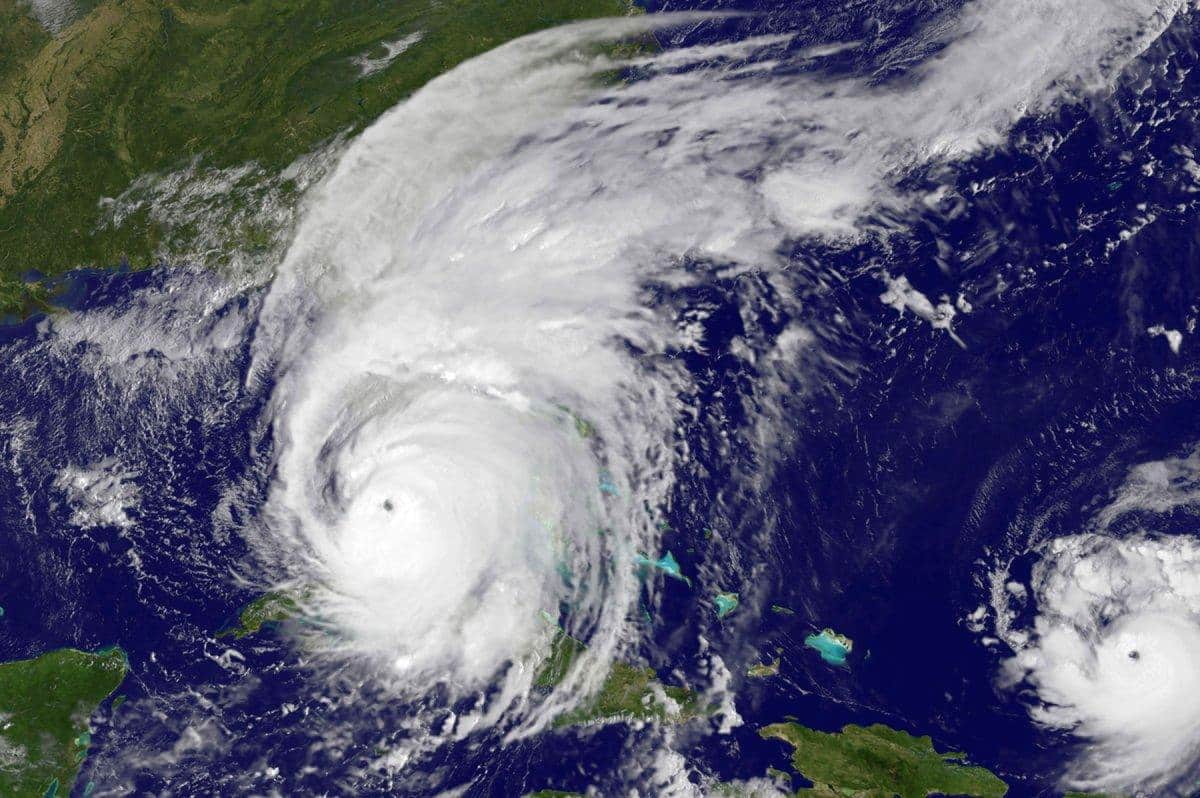
Inform the Right People at the Right Time
In the event of a hurricane, organizations need to identify the right audience for their messages quickly. Be ready to send hurricane communications to appropriate people or groups, including remote and lone workers, based on their proximity to the affected areas. For example, if there is a hurricane in Miami, Florida, administrators need to ensure that only employees in or around Miami receive these critical messages.
Administrators should take the time to group individuals based on their office locations to better deploy location-based notifications. You can use grouping in many different scenarios, but using location services during a hurricane is key to getting the relevant message to the right people quickly.
Monitor for Threats
Modern technology allows meteorologists to track potential hurricanes, even when they are just tropical storms brewing in the Atlantic. Early in the storms’ development, they are not likely to make the news. Most of the time, hurricanes only start to make headlines when they are a few days out from landfall. As an organization, however, you need to have approaching storms on your radar much earlier to start making the necessary preparations.
This is where global threat intelligence comes in. Threat intelligence systems like AlertMedia aggregate threat data from trusted sources around the world and proactively alert you when a threat is emerging that could impact your people or assets. Using a solution like this allows you to get a head start on your emergency management planning for an approaching storm and ensures that nothing blindsides you.
Consolidate Your Hurricane Communication Plan
According to FEMA, nearly 40% of small businesses that close due to hurricanes and other weather-related damage never reopen. No small business wants to be part of that statistic. And while large companies are more likely to survive a hurricane, they are also more likely to be impacted, since large organizations typically have multiple locations and far-reaching supply chains. To mitigate a hurricane’s impact, organizations large and small need to prepare for hurricane season. Strengthen your hurricane preparedness checklist and plan before a hurricane hits.
With a modern mass communications tool, you can get ahead of the storms and better execute your hurricane communication plan by:
- Distributing company expectations for crisis communications
- Providing guidance and instruction to employees
- Empowering those involved to communicate from anywhere at any time
A clear, organized plan will minimize chaos and help keep people safe.
Before your business has to navigate the flooding, high winds, and power outages from hurricanes, you must have a clear communication plan to quickly deploy notifications to employees when the storm hits. You can use an emergency communication plan template like this one to make your planning process seamless.
Create Event Pages and Notification Templates
Event templates enable organizations to centralize hurricane updates and resources on a single, dedicated web page. Rather than sending a new alert for every update, you can direct employees to the event page for the latest information.
Some ideas for helpful content to include on an event page include:
- Photos of facility or infrastructure damage
- Maps of evacuation routes and shelter locations
- Facility reopening updates and return-to-work plans
- Resource links (e.g., fuel, water, or medical services)
- Safety check-in instructions or contact points
As admins craft their event page(s) around hurricane season, drafting hurricane notification templates around all possible outcomes is essential. That way, organizations are one click away from warning and advising their people. In critical situations, organizations can deploy immediate notifications that elicit helpful responses. Common types are:
- Surveys that encourage audience engagement by asking, “Are you okay?”
- Notifications updating the current status
- Notifications with read confirmations communicating office closures, remote access, or power outages
- Impromptu conference calls that allow key stakeholders to get on the same page
Here are two sample notification templates:
Storm approaching — Text messageYour location is in the projected path of Hurricane [NAME]. As the storm progresses, we will provide updates on office closures and evacuation orders. |
Evacuation order — PhoneA mandatory evacuation has been ordered for [NAME OF CITY] as of [TIME AND DATE]. Our office will remain closed until further notice. Please continue to check in with your supervisor for instructions. If you need assistance, please call [CONTACT NAME AND PHONE]. |
Emergency communication best practices ensure you send notifications without missing critical information or overcomplicating alerts.Here are some best practices for message clarity and effectiveness:
- Use concise language to reduce confusion and improve comprehension
- Include only essential information—who, what, where, and what action is needed
- Provide clear instructions, such as “evacuate immediately” or “shelter in place”
- Add timestamps so recipients know how current the information is
- Avoid jargon; stick to plain language employees can act on quickly
- Ensure messages are inclusive and accessible, using language that’s easy to understand, adding translations where needed, and following formats compatible with assistive technologies
In addition to clear messaging, you need the right tools and channels to ensure message receipt and engagement. Always use official channels to maintain trust and prevent the spread of misinformation. Where appropriate, you can enhance alerts with visual aids such as maps, images, or videos to provide visual context for complex or location-based instructions. Finally, you’ll want to build a library of templated messages for different scenarios during a hurricane so your team can send consistent, fast responses, and reserve urgent messages for truly time-sensitive updates to avoid alert fatigue.
Hurricane Communications Example: How the Gulf Coast Regional Blood Center Weathered the Storm
As Hurricane Harvey approached the Texas coast in August 2017, many businesses started to scramble without hurricane emergency communication plans. However, Gulf Coast Regional Blood Center knew they already had a plan. For the past year, they had been developing and testing a hurricane communication plan using AlertMedia, their mass communication system. When Hurricane Harvey hit, they activated the plan.
Gulf Coast Regional Blood Center’s critical task was maintaining business continuity throughout the hurricane. Its headquarters in Houston serves the Texas Gulf Coast region and the Texas Medical Center, the largest medical center in the world, with timely blood deliveries. Hospitals that use blood products daily always need blood, but that need is never more pronounced than during a life-impacting crisis. During Hurricane Harvey, the Blood Center’s services were more important than ever.
Their first step was to use AlertMedia’s conference call feature to connect key stakeholders and discuss necessary plans and procedures. Then, the Blood Center used status updates to communicate with and account for all its team members. Based on their responses, they coordinated scheduling, determined who had the all-clear to come to work, and identified who might need assistance.
Thanks to uninterrupted communications, the Blood Center coordinated plans for continued blood delivery to hospitals. They also informed staff of canceled drives and when they’d reopen. With facilities spanning the Gulf Coast Region, AlertMedia was vital in keeping the entire center operational during Hurricane Harvey. Beyond helping the Blood Center navigate one of the costliest disasters in U.S. history, AlertMedia has proved to be an invaluable ongoing resource.
Conduct Post-Storm Debriefings to Drive Continuous Improvement
Every hurricane presents an opportunity to strengthen your emergency communication strategy. After each event, conduct thorough after-action reviews and debriefings with key stakeholders to evaluate what worked, what didn’t, and how to improve.
Start by analyzing communication data from your mass notification system, including delivery success rates, response times, and real-time tracking of employee check-ins. Review your communication protocols, message templates, and reporting procedures to assess clarity, effectiveness, and speed.
Use post-storm analysis to document outcomes, capture feedback from employees and field teams, and identify gaps in situational awareness or coordination. This documentation becomes the foundation for updating your protocols and strengthening future training and drills.
Embedding continuous improvement into your hurricane communications cycle helps your team respond faster, smarter, and more effectively with every storm.
Crafting Your Plan
It can feel overwhelming to start a hurricane communication plan from scratch. Find a modern mass communication system that fits your organization’s needs. Then upload communication templates and discuss with key stakeholders what procedures make the most sense for your company. Even if you don’t plan out every contingency, having templates ready, along with a general plan, will go a long way when a hurricane threatens business continuity.
Hurricanes bring a lot of uncertainty to the table. However, having a hurricane communication plan you can activate at a moment’s notice gives you peace of mind.

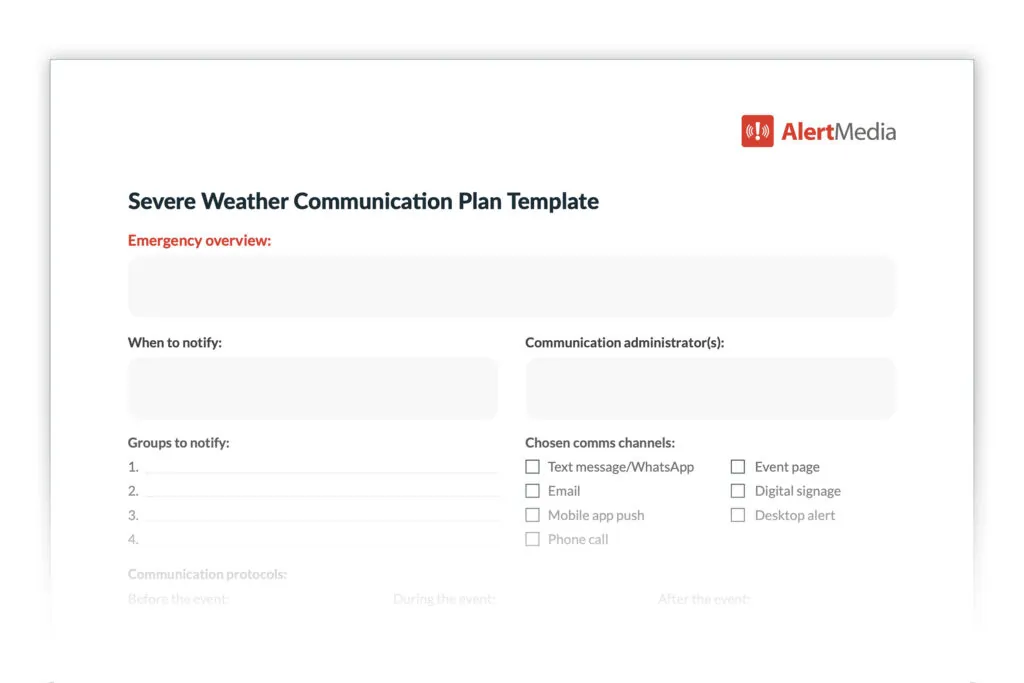
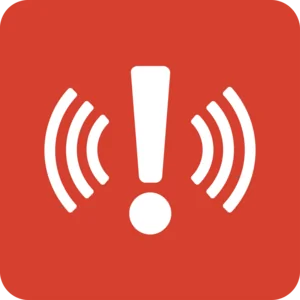
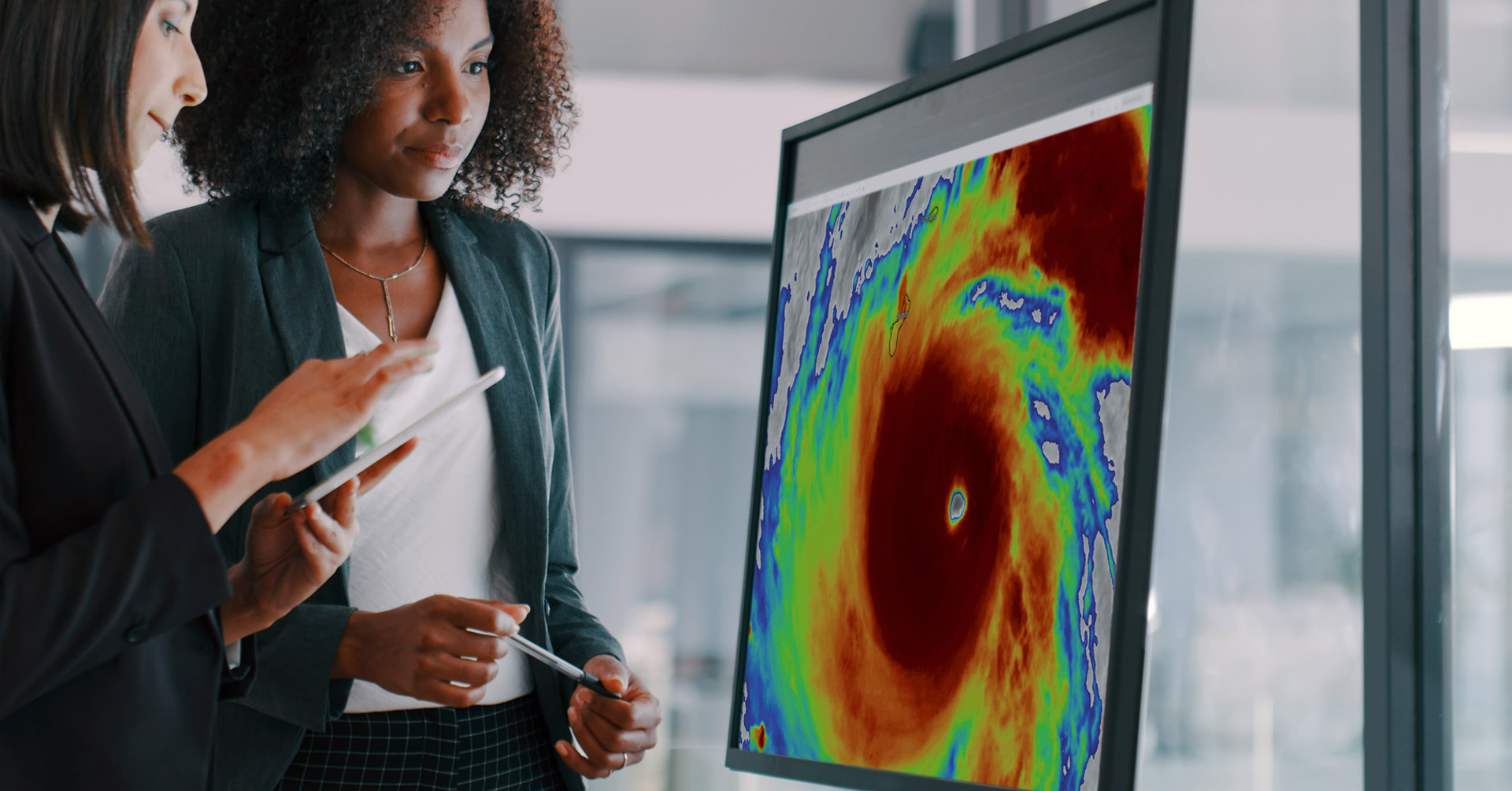
![Disaster and Emergency Communication Plan—5 Steps [+Template]](https://www.alertmedia.com/wp-content/uploads/2022/03/BLOG-Emergency-Communications-Plan-V1.jpg)
